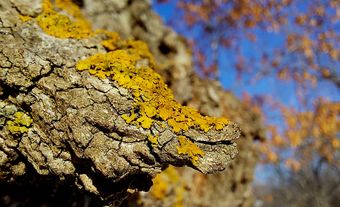Greenland, also known as Kalaallit Nunaat, is the world’s largest island and Canada’s northeasterly neighbour. The capital city of Nuuk has a population of 19,604, though Greenland as a whole has a population of over 55,000 (2023). Primarily inhabited by Inuit and other Nordic Indigenous peoples, the island is under Danish sovereignty today. Known for its dramatic landscape and massive ice sheet, Greenland has been growing its tourism industry in recent years.
Geography
At over 2 million km2, Greenland is the world’s largest island. Approximately 80 per cent of this land is covered in a gigantic ice sheet more than 100,000 years old and over 3 km thick. Where its adjoining glaciers meet rivers and oceans, massive chunks of ice break free to form iceberg.
Much of what is not permanently covered in an ice sheet is tundra, with cold weather and short growing seasons. Moorlands, bogs, grasslands and steppes are also common. In northern Greenland, where there is very little precipitation, there is even an arctic desert. Notably, the arctic desert around Peary Land can experience less rainfall than the Sahara Desert.
Greenland’s high latitude also results in long nights during the winter and long days during the summer (see Midnight Sun). The northern lights are also frequently on display above portions of Greenland.

Culture
Language
Greenlandic schoolchildren are taught English, Danish and West Greenlandic in school. West Greenlandic is one of four Greenlandic dialects, also including South Greenlandic, East Greenlandic and the Thule Dialect. Greenlandic belongs to the Inuit language family and is a polysynthetic language.
Cuisine
Given Greenland’s high latitude, cold winters and short growing season, meat features prominently in Greenlandic cuisine. Mammals, birds and fish are among the most reliable non-imported food sources on the island. A long history of community ties around hunting and meal-sharing further cement hunting and fishing as a prominent part of Greenlandic culture.
Arts
Greenlandic arts and crafts take much inspiration from wildlife and nature as well as traditional Inuit culture. Common materials include soapstone, reindeer antlers, musk ox wool and mussel shells. Soapstone, in particular, has a very long history of use in more practical day-to-day items as well as in the arts. Historically, some fishing gear, lamps and domestic utensils were made of soapstone.

Flora and Fauna
Despite its polar climate, Greenland is home to a wide array of plants and animals.
Greenlandic animals include land mammals such as polar bears, musk oxen and reindeer; marine mammals such as humpback whales, beluga whales, harp seals and walrus; birds such as snow buntings, Atlantic puffins, common eiders and rock ptarmigan; fish such as Atlantic salmon, Arctic char, Atlantic cod, and Greenland sharks; insects and spiders such as Arctic fritillaries, Arctic bumblebees, transverse lady beetles and Greenlandic thin-legged wolf spiders.
Did you know?
Greenland sharks can live over 500 years due to their slow metabolism and slow growth rates. They only reach sexual maturity at around 100 years old and can reach 6 m long. They can dive 2,200 m deep and have a maximum speed of around 2.9 km/h.
There are over 520 plant species native to Greenland. Some of the most common are heaths, blueberries, crowberries, birches, willows and heathers. In many areas, vegetation only reaches up to 50 cm and is interspersed with fungi, moss and lichen. Where trees are present, they are usually only 3-4 m. In fact, Paradise Valley, or Qinngua Valley, is known for having the only “real” forest in Greenland. There, 10-m tall birches and willows grow in the unusually warm and lush valley.
Did you know?
Only one conifer is known to grow in the wild in Greenland, earning the title of Greenland’s Most Famous Christmas Tree. The tree is a 3-m tall fir tree in Eternity Fjord. This tree was planted in the 1930s and has persisted to this day, though poor conditions keep it abnormally small.
History
Greenland’s human history began around 5,000 years ago when people migrated from the North American continent across the frozen sea. At least six different Inuit cultures migrated to Greenland in various waves across thousands of years. Most of Greenland’s population today descends from the most recent migration around 800 CE.
Shortly after this, in 982 CE, Greenland saw the arrival of the first Norse settlers (see Norse Voyages and Norse-Indigenous Contact). However, the Norse population disappeared from Greenland around 1500 CE. Some of these settlers’ ruins continue to be visible today.
In the 16th, 17th and 18th centuries, English and Norwegian expeditions visited Greenland, and various European whalers traded with the Greenlandic Inuit (see Arctic Exploration).
Today, Greenland is an autonomous territory of Denmark.
Environmental Concerns
Much like most other arctic regions, Greenland is deeply affected by climate change. With the Arctic heating at twice the speed of the global average, southern Greenland has experienced a dramatic 3oC increase in temperature over the last 7 years.
With the second largest ice sheet on earth, covering 80 per cent of Greenland, the impact of this heating is visible in the increased rate at which the ice sheet is melting. Between 2002 and 2016, Greenland’s ice sheet lost a mass of around 269 gigatonnes. This amounts to 269 billion tonnes per year or around 30 million tonnes per hour. If the entire ice sheet melted, global sea levels could rise as much as 7.3 m.
This ice sheet also helps moderate the earth’s temperature via the albedo effect. The albedo effect occurs when a light-coloured surface, such as snow, significantly reflects light from the sun back into space. On a large enough scale, such as with entire ice sheets, this can result in less of the sun’s heat being trapped in the earth’s atmosphere and a cooler climate. As it melts, it is less able to perform this function.


 Share on Facebook
Share on Facebook Share on X
Share on X Share by Email
Share by Email Share on Google Classroom
Share on Google Classroom



